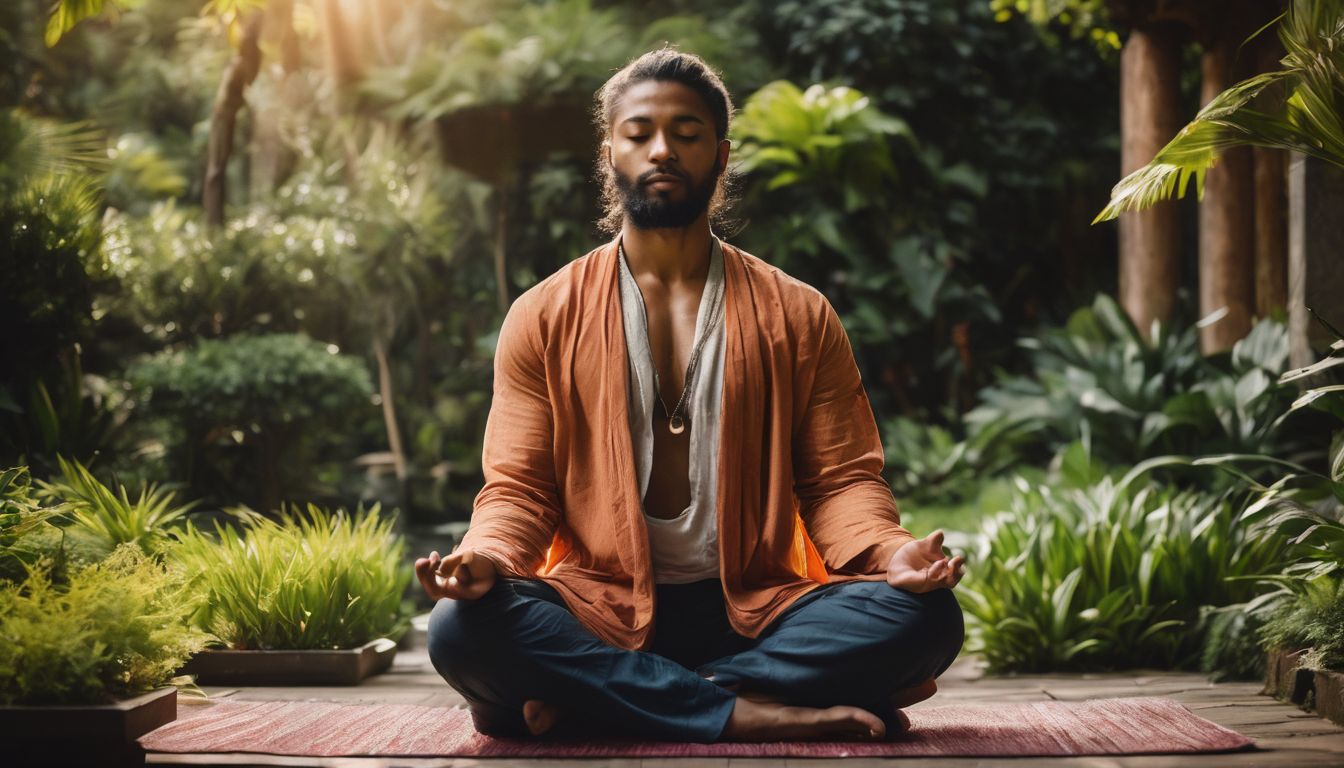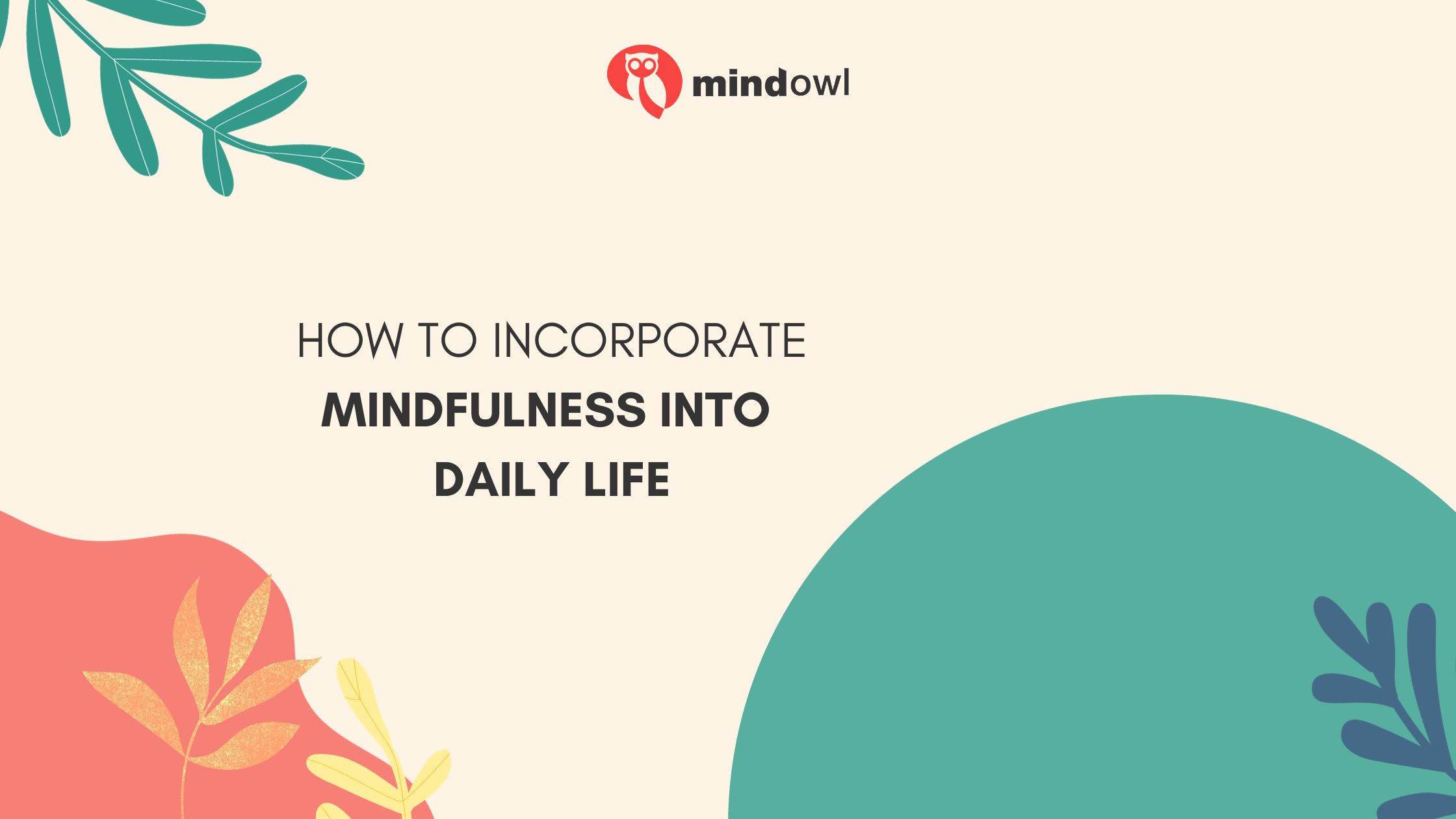
With constant distractions and never-ending to-do lists, it can be difficult to find moments of peace and quiet. However, incorporating mindfulness into our daily routines can help us find a sense of calm and clarity amidst the chaos.
From simple breathing exercises to mindful eating and walking, there are countless ways to incorporate mindfulness into our daily routines. Whether it’s taking a few minutes each morning to meditate or simply being more aware of our actions and behaviours throughout the day, mindfulness can have a profound impact on our overall mental and emotional well-being.
In this article, we will explore different techniques and strategies for incorporating mindfulness into our daily lives, allowing us to experience greater peace and presence in our daily activities.
Key Takeaways
- Start your day with mindfulness by taking a few minutes each morning to breathe deeply and think about what you are thankful for. This can set a positive tone for the day ahead.
- Use daily activities like eating, walking or waiting as chances to practice mindfulness. Focus on your senses during these times to help stay in the present moment.
- Before going to bed, do some relaxing exercises such as meditation or mindful breathing to help clear your mind and get better sleep.
- Attach mindfulness practices to existing habits in your routine so it becomes easier to remember them throughout the day.
- Remember that even small moments of being mindful can improve how you feel overall.
Understanding Mindfulness

Mindfulness is the practice of being fully present and aware in the current moment, without judgment or distraction. It involves paying attention to our thoughts, feelings, bodily sensations, and the surrounding environment.
The benefits of mindfulness include a reduction in stress, improved mental clarity and focus, and a greater sense of overall well-being.
Definition and principles
Mindfulness is all about being aware of what’s happening right now. It means paying attention on purpose, in the present moment, without making judgments. Key principles involve noticing thoughts, feelings, and sensations as they come and go.
This practice can happen during meditation or at any point throughout the day.
Breathing methods, guided imagery, and other techniques are part of it too. They help relax your body and mind to stress less. You gently focus your awareness over and over again on what you’re doing or feeling right this second.
That’s the heart of practicing mindfulness every single day.
Benefits for overall well-being
Moving from the core ideas of mindfulness, let’s explore how it touches our lives deeply. Mindfulness meditation does wonders for our quality of life. Chronic illness can weigh heavy on the mind, but this practice offers a lighter load.
It helps manage tough symptoms and opens up a path to better mental health.
Feeling happy is something we all chase, and mindfulness leads us there. It calms stress down and gives our physical health a boost too. Regular mindfulness exercises sharpen memory and keep emotions in check—fewer worries about anxiety or slipping into sad thoughts.
They make room for clearer thinking and stronger focus day by day.
5 Simple Ways to Practice Mindfulness in Daily Life

Practice gratitude by taking a moment each day to reflect on what you’re thankful for. Engage in a body scan to tune into the sensations and feelings within your body. Incorporate mindful breathing exercises, focusing on the rise and fall of your chest with each breath.
Stay present by practicing sensory awareness during daily activities, and embrace mindfulness while waiting, using the time to focus on your breath and surroundings.
Gratitude practice
Gratitude practice is a simple way to become more mindful in your daily life. Start by taking a moment each day to think about things you’re thankful for. These could be big, like a loving family, or small, like a sunny morning.
Write them down in a journal or just say them out loud. This act of focusing on the good stuff can make you feel happier and strengthen your connections with others.
Make it part of your routine; maybe when you wake up or before bed. See how this changes the way you look at your day. You might notice more positive moments and feel better able to deal with tough times.
Gratitude turns what we have into enough, and that’s powerful stuff for mental health and well-being.
Body scan
A body scan is a powerful mindfulness practice. It involves lying down, taking deep breaths, and focusing on each part of your body, one at a time. You start from your toes and move all the way up to your head.
This simple exercise brings full attention to how each area feels.
As you focus on different parts, notice any tension or discomfort. Don’t try to change these feelings; just be aware of them. The goal is acceptance – recognising where you might be tight or in pain without judgment.
Mindfulness through a body scan can help lower stress by making you more aware of what’s happening inside your body right now.
Mindful breathing
Mindful breathing sits at the heart of living mindfully every day. Take a moment to focus on your breathing, feeling the air as you inhale and exhale. This simple practice can help you stay calm and focused, especially during busy times in your day-to-day life.
You don’t need any special tools or a quiet room—just take a few deep breaths wherever you are.
By bringing your attention to how your body feels with each breath, you learn to tune into the present moment. It allows you to step back from stressful thoughts and feelings without trying to change them.
With regular mindfulness practice like this, many find their mood lifts and stress eases away. Try it next time before an important meeting or while waiting in line; it’s a powerful way to reset your mind and reduce stress anywhere, anytime.
Sensory awareness
Sensory awareness plays a critical role in practising mindfulness. It’s about using your five senses to stay present. See the colours around you, touch different textures, listen to nearby sounds, smell what’s in the air, and taste your food fully.
This helps you tune into the now and makes daily life richer.
Try this: Focus on one sense at a time. Maybe during lunch, really notice every bite. How does it feel? What flavours can you spot? Or when outside, focus on the sensation of the sun or breeze against your skin.
These simple acts bring your attention back to the present moment and help you enjoy more of life’s details.
Mindful waiting
Mindful waiting is a simple way to practice mindfulness. You use the time you spend waiting to notice your thoughts and feel the present moment. This could be while you stand in line at the store or wait for a bus.
Instead of letting your mind wander, focus on what’s happening right now.
Pay attention to how your body feels as you wait. Notice if your heart beats fast or slow, and breathe calmly. Look at what’s around you, watch people come and go, listen to sounds near and far — these things help keep you in the present moment.
Mindful waiting turns regular pauses into chances for calmness and awareness throughout your day.
Setting Clear Intentions
Setting clear intentions involves identifying the reasons for incorporating mindfulness into daily life and starting small, gradually building on the practice. By understanding the purpose behind practicing mindfulness, individuals can cultivate a more consistent and meaningful habit that aligns with their personal goals and values.
Identifying reasons for incorporating mindfulness
Incorporating mindfulness into daily life can bring numerous benefits, such as improvement in mental and emotional well-being, deeper connections with others, and living with greater intention.
By identifying the reasons for incorporating mindfulness, individuals become motivated to make it a part of their daily routines. Case studies have shown that practicing mindfulness leads to positive changes in overall well-being.
When individuals understand the reasons behind incorporating mindfulness, they are more likely to commit to making it a regular habit.
Understanding these reasons is essential for creating a strong foundation for integrating mindfulness practices into daily life. As we delve deeper into setting clear intentions, we can explore simple ways to practice mindfulness and how it can be seamlessly integrated into our daily routines.
Starting small and gradually building
Begin by incorporating mindfulness into small moments of your daily routine. You can start with short periods of mindful breathing or a quick body scan when you wake up or before going to bed.
By attaching these practices to existing habits, such as brushing your teeth or waiting for the kettle to boil, you can slowly integrate mindfulness into your day without feeling overwhelmed.
Over time, gradually expand these moments of mindfulness and try new techniques like practising gratitude or engaging in sensory awareness during regular activities, like eating meals or taking a walk.
Keep in mind that even brief moments of mindfulness throughout the day can have a positive impact on your overall well-being. It’s about creating tiny pockets of presence amidst the busyness of everyday life – allowing yourself to pause and reconnect with the present moment before moving forward with renewed clarity and calmness.
Incorporating Mindfulness Into Daily Routines
Upon waking up, take a few minutes to practice mindful breathing or gratitude. Throughout the day, find opportunities to be present and mindful during regular activities such as eating, walking, or working.
Before bed, engage in a calming activity like meditation to end the day on a peaceful note.
Upon waking up
As you wake up in the morning, take a moment to notice your surroundings—feel the warmth of your bed, hear the sounds around you, and take a few deep breaths. Set an intention for the day by acknowledging one thing you are grateful for.
This simple practice can set a positive tone for your entire day and help you start with a mindful mindset.
Taking just a few moments as soon as you wake up to focus on your breathing and express gratitude can influence how you approach the rest of the day. By incorporating this into your morning routine, you can cultivate awareness and create space for mindfulness throughout your day.
During regular daily activities
As you go about your regular daily activities such as cooking, cleaning, or working at your desk, take moments to check in with yourself. Notice the sensations in your body as you move or sit.
Feel the weight of whatever you’re holding – a cup of tea, a book, or a pen. Pay attention to the rhythm of your breath and bring yourself back if your mind wanders. Whenever you have to wait – whether it’s for a kettle to boil or an appointment to begin – use that time for a mindful pause.
Take deep breaths and focus on the sensation of the air entering and leaving your body.
Before bed
As you wind down for the night, incorporating mindfulness practices before bed can have a positive impact on your sleep quality. Engaging in mindfulness meditation or simple breathing exercises can help promote relaxation and ease any lingering stress or worries from the day.
By focusing on the present moment and acknowledging any physical sensations or emotions without judgment, you can prepare your mind and body for a restful night’s sleep. These intentional moments of mindfulness before bed can create a soothing transition to bedtime, allowing you to let go of the day’s events and embrace a sense of calm as you prepare to drift off into peaceful slumber.
Remember that taking just a few minutes to practice mindfulness before bed can make a notable difference in how well-rested and rejuvenated you feel the next morning. Creating a regular bedtime routine with mindful activities can set the stage for improved sleep patterns and overall well-being over time.
Conclusion
In summary, integrating mindfulness into daily life can be achieved through simple practices like gratitude, mindful breathing, and sensory awareness. By setting clear intentions and incorporating mindfulness into daily routines such as waking up and before bed, the benefits of improved well-being and reduced stress can be realised.
Mindfulness not only enhances self-awareness but also sharpens focus on the present moment, leading to increased productivity and a deeper appreciation of everyday life.
FAQs
1. What does it mean to incorporate mindfulness into daily life?
Incorporate mindfulness… means paying close attention to the present moment, throughout your day. It’s making a daily habit of noticing what’s around you, how you feel – head to toe.
2. Can I practice mindfulness every day with simple exercises?
Absolutely! You can meditate, take a mindful walk or do deep breathing for just minutes each time. Practice these moments in life every day to stay focused on now.
3. How does mindful eating fit into everyday mindfulness?
Mindful eating is about taking the time to taste and enjoy your food. Notice the flavors and textures… Chew slowly and don’t rush – this helps make meals special times during the day.
4. Are there quick ways to be more mindful in my everyday tasks?
Sure thing – take a breath before answering emails or focus your attention when listening in conversations… Simple actions count towards practising mindfulness in daily life!
5. Does meditation have a place in my daily routine for practising mindfulness?
Meditation is perfect! Carve out some quiet time; even five minutes could help connect lower stress levels with higher peace of mind—focus on sensations in your body as you sit still.
6. What are other easy mindfulness activities I can try today?
Try doing one thing at a time or focusing on your steps while walking – those are both great starts for getting more aware of yourself and everything around you.
MindOwl Founder – My own struggles in life have led me to this path of understanding the human condition. I graduated with a bachelor’s degree in philosophy before completing a master’s degree in psychology at Regent’s University London. I then completed a postgraduate diploma in philosophical counselling before being trained in ACT (Acceptance and commitment therapy).
I’ve spent the last eight years studying the encounter of meditative practices with modern psychology.

